Bog Rosemary is the perfect little plant for the wet spots in your landscape, because it’s small, evergreen, and covered in pink flowers every Spring. Here’s my own trial and error with this perennial shrublet.
Bog Rosemary literally grows best in boggy areas of your garden, so think about those low, wet spots or an area that is constantly moist.
Trust me, if you don’t plant it in a moist enough spot, these plants will let you know.
(I’ve got my own show-and-tell for you further down this page to explain.)
But first — a note of caution!
Caution: this plant is known to be poisonous if ingested. That’s a major difference between Bog Rosemary and the edible herb Rosemary!
I always use garden gloves when I’m planting and doing garden chores so I don’t have to worry about getting any allergic reactions to plants in general.
Please use caution if you have children or pets that might not understand they shouldn’t eat this plant.
Personally, I have not always seen this mentioned on plant tags or descriptions, so I want to make sure you’re aware!
Bog Rosemary Facts You Need to Know (Andromeda Polifolia)
Why is it called Bog Rosemary – Andromeda Polifolia?

Drawing by Carl Linnaeus (1707-1778) [Public domain], via Wikimedia Commons
The common name — Bog Rosemary — is because its leaves resemble the leaves of the edible herb plant Rosemary.
Of course it grows in soggy, boggy soil, thus the word “bog” is part of the name.
Bog Rosemary is part of the Ericaceae family of plants, which includes heath, heather, rhododendron, azalea, and blueberry shrubs.
Here’s a picture of Heather in our backyard:
Bog Rosemary Specifics:
- Partial to full sun*
- Spring blooming to early Summer
- Needs wet or evenly moist soil
- Do not let it dry out between waterings
- Size: approximately 1 foot tall and up to 3 feet wide
- Evergreen
- Can be grown as a low-growing shrub or as a groundcover (several together)
- Loves acidic soil — fertilize in the Spring with Holly Tone (by Espoma) (Amazon affiliate link) to keep the plants happy
*I’ve also seen “shade” listed occasionally, instead of partial to full sun. Again, I think the more important need is constant moisture. So if you’re planting Bog Rosemary in full sun, make sure they are in a spot that doesn’t dry out.
The most commonly sold type of Bog Rosemary is Blue Ice. In fact, Blue Ice was on the plant tag of the Bog Rosemary plants I purchased.
Keep your eyes out for Bog Rosemary at your local garden centers or home improvement stores. You can also order Bog Rosemary online from Amazon! (Amazon affiliate link)
USDA Zones:
When searching on the interwebs, it appears that almost everyone says Bog Rosemary grows well in USDA Zones 2 through 6.
I purchased these plants living here at the New Jersey shore, in Zone 7b, and it grows fine in this zone too.
I also found one site that listed USDA Zones 2 through 9.
It makes me wonder if everyone just copied the “zones 2 through 6” information onto their own pages about this plant.
According to the US Forest Service, Bog Rosemary is found throughout North America “from Greenland through the Canadian provinces to Alaska and south to Washington and Idaho. It occurs south along the north Atlantic coast to New Jersey and west to Illinois and Minnesota.”
My advice?
Ask your local garden nursery if Bog Rosemary will grow in your area, if you’re unsure.
My own experience with Bog Rosemary
I had first read about these plants when doing research for shrubs that can handle a lot of moisture. Having never heard of them until my research, I got a kick out of something resembling Rosemary yet needing a ton of water — unlike the Rosemary herb which prefers to live in a drier soil environment.
And Bog Rosemary was referred to as a shrublet. How cute is that?
On a trip to the home improvement store several weeks later, I was stopped in my tracks when I saw tons of Bog Rosemary plants for sale!
After my husband sort-of patiently listened to me try and explain through my excitement why we needed these plants for our garden — and how the future of our garden hung in the balance unless we got these plants — we bought three of them.
Yes, I get totally excited about plants. I admit it.
My husband has a standard question in response to plants, shrubs, or trees that I want to buy:
“Where will the plant(s) go?”
I was so ready with my answer this time.
We would plant the Bog Rosemary in one of our front beds, near where there was a bit of a drainage problem and it tended to stay moist in that area.
Once home, I grabbed my favorite mini garden shovel and got to work. (Click the link in the previous sentence to read my shovel post.)
April 2016
I was so happy! I knew these plants would look great near the street and be very showy the following Spring with their mounds of tiny pink flowers!
Below, newly planted, they are just past their blooming time, but the dying blooms gave me a hint of their splendor.
Our new landscaping was still very young, so you can see in the early Spring of 2016, everything was little: the red twig dogwoods, the barely noticeable river birch tree, the limelight hydrangeas.
The boulders looked like the best things growing at that point!
The Bog Rosemary was a little past its peak blooming time as I mentioned above — and as you can see in these photos — but you can also see the lovely blue-green foliage that truly looks like it belongs on a Rosemary herb plant!
As the weeks went on, we noticed these plants weren’t completely thrilled with their location.
In fact, they seemed to be gasping for water, no matter how much rain fell, and no matter how much we watered them.
They barely survived one month in that spot, before I knew we needed to transplant them.
It was a gardening emergency!
May 2016
One month later, almost to the day, we transplanted the three Bog Rosemary plants into the wettest spot in our front yard, which looked like this before the new plants moved in:
In the image above you see the groundcover junipers that the landscaper had planted, looking rather sickly as they couldn’t handle that much water.
So we ripped them out.
Yuck, right? That perfect hole is what was left when we pulled out the slurpy mess of juniper and weak roots. It had barely been surviving.
Here’s the same area, once we transplanted the Bog Rosemary into their new — and hopefully permanent — home.
You can see how much of the plants had died for lack of enough water in just one month. Crazy, right?
We also planted a specific variety of Rose of Sharon that supposedly thrives in wet soil, which is visible in the back to the left of the Bog Rosemary.
Spoiler alert: the Rose of Sharon did not thrive, let alone survive, in that wet soil.
And I still don’t want to talk about it.
July 2016
Throughout the Summer, the Bog Rosemary seemed fine with their location, especially the one in the middle, below.
November 2016
By the Fall — November 2016 — our little shrublets had somewhat rebounded with new growth and I felt they’d be fairly evergreen (keeping their color) over the Winter season.
Not looking great, but definitely surviving their near-death experience.
April 2017
Oh be still my heart at how gorgeous these plants looked last Spring, covered with tiny pink flowers!
I was completely smitten!
Two out of three looked good.
However, the third one — which had the most damage the previous year — still needed to bounce back a bit:
Look closely and you’ll see one blossom! There was hope!
Here’s a close-up picture so you can see how pretty the tiny Bog Rosemary blooms are, as well as the interesting textured leaves:
The next two images show you the height from the ground up — literally!
Winter 2018
The leaves turn a little pale and a little purple during the Winter months.
They still aren’t as colorful as I would like, but I think it’s due in part to just how wet it truly gets in this spot:
Yes, that’s a standing puddle there.
This season, I’ll continue amending the soil a bit to see if I can fix this area.
The drainage stinks because it’s all clay, and you need a pickax to try and break it all up.
In the meantime, I’ll stare at our pretty pictures from last year and try to patiently await the arrival of Spring!
And yes, I plan to purchase more of these adorable little shrublets to add to this area!
Bottom line? If you’ve got wet spots, try growing Bog Rosemary there!
Happy gardening!

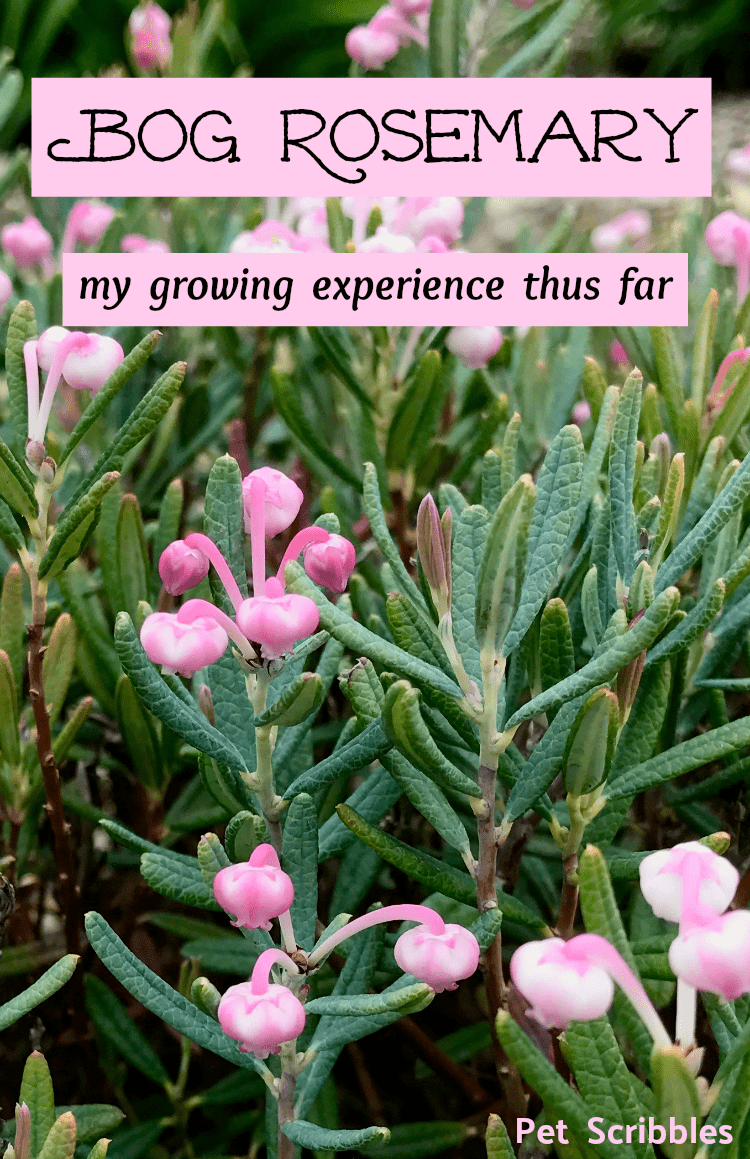
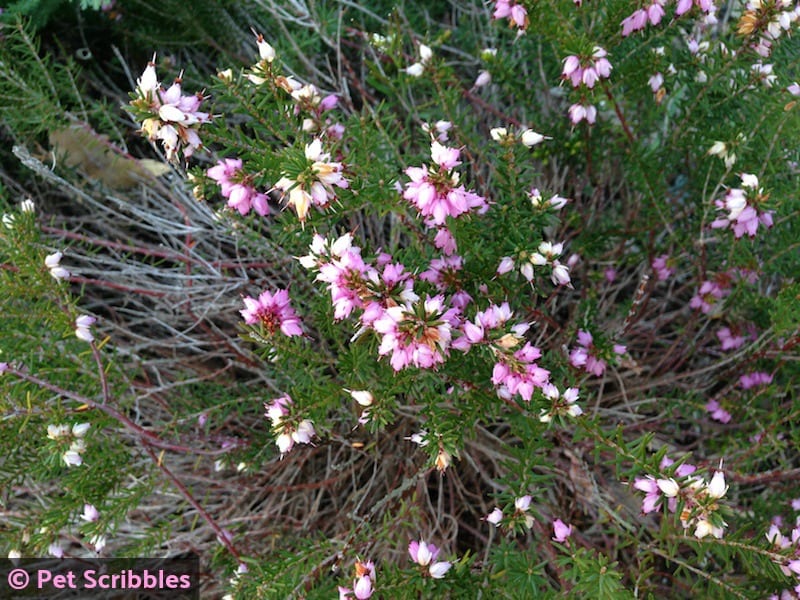
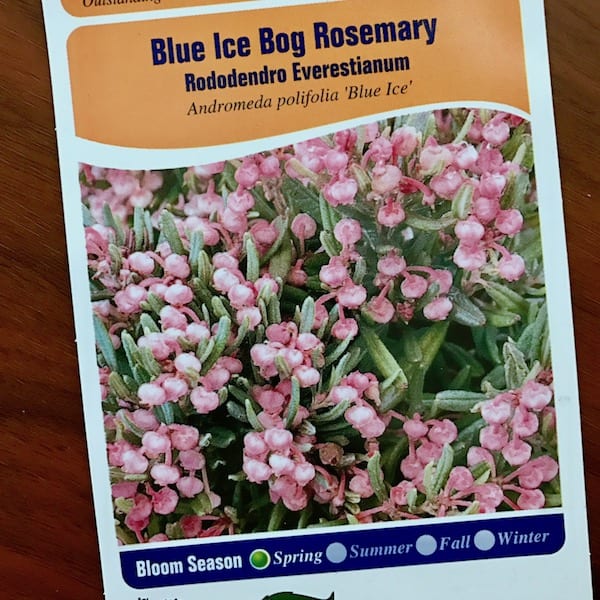
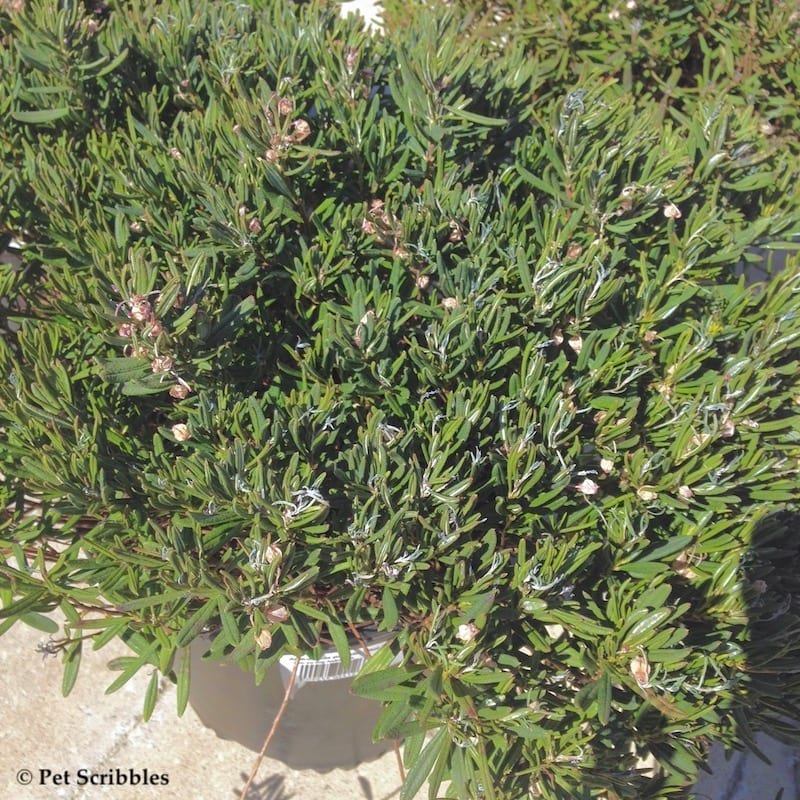
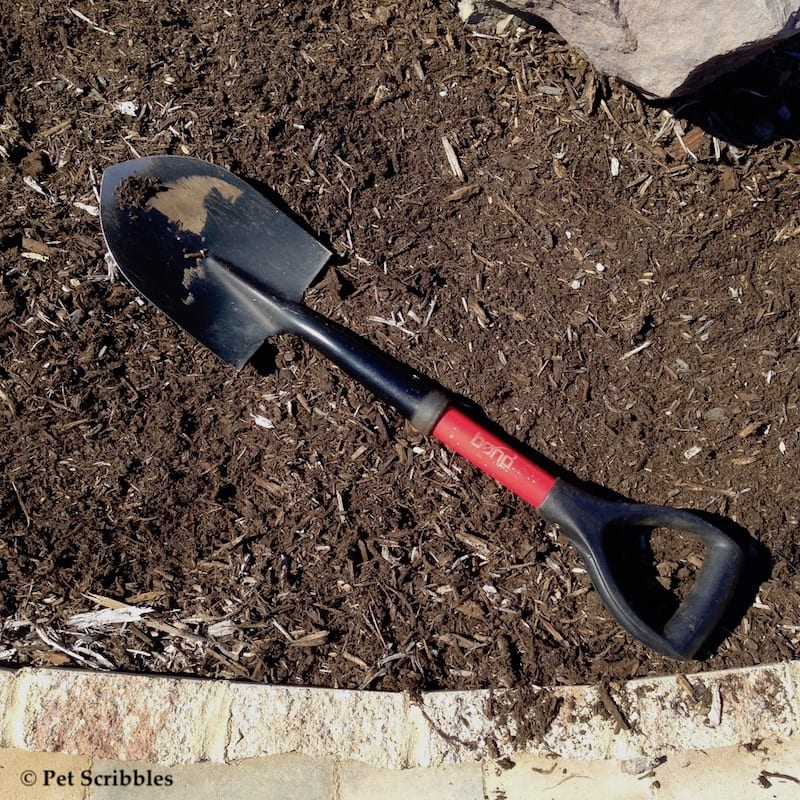
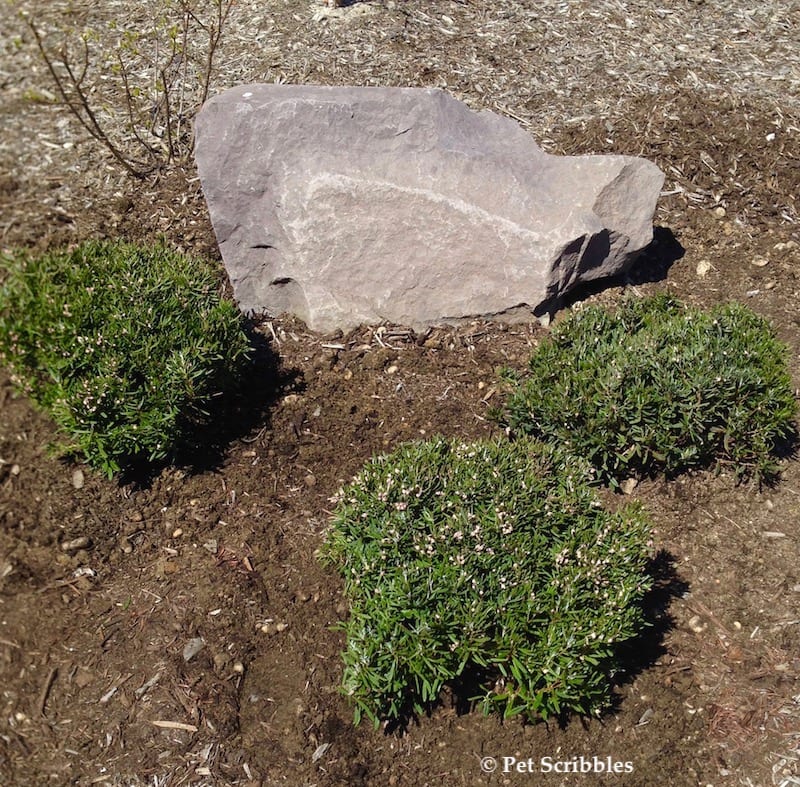
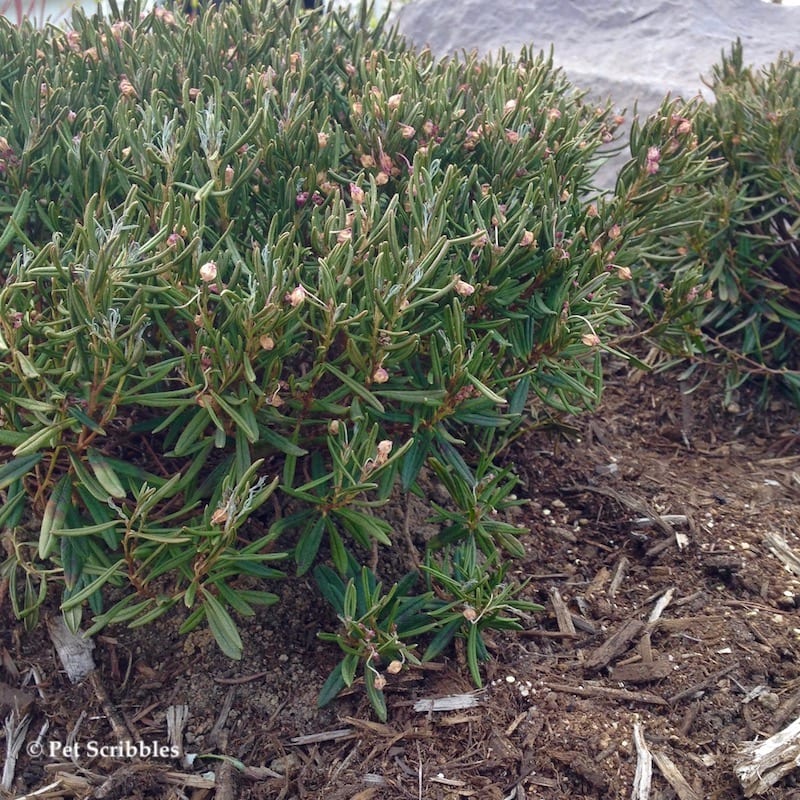
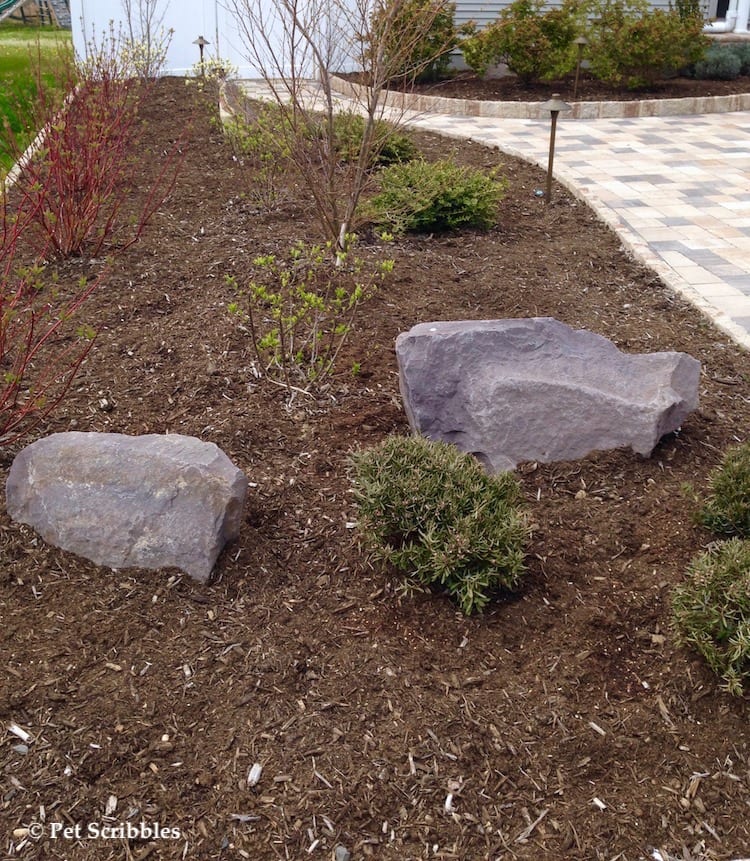
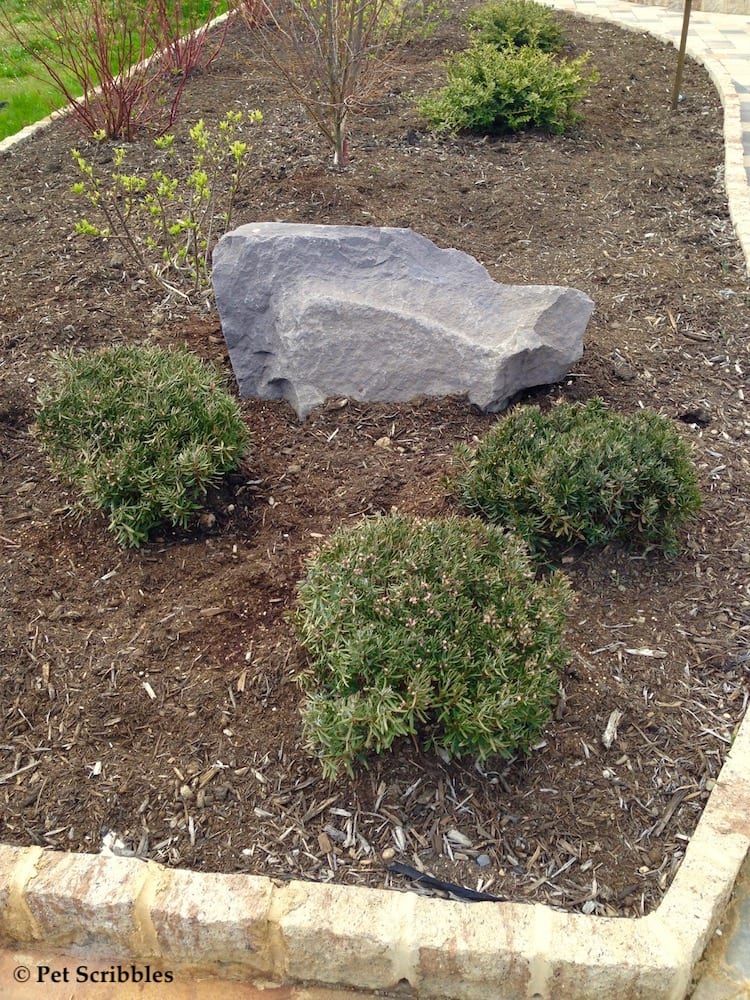
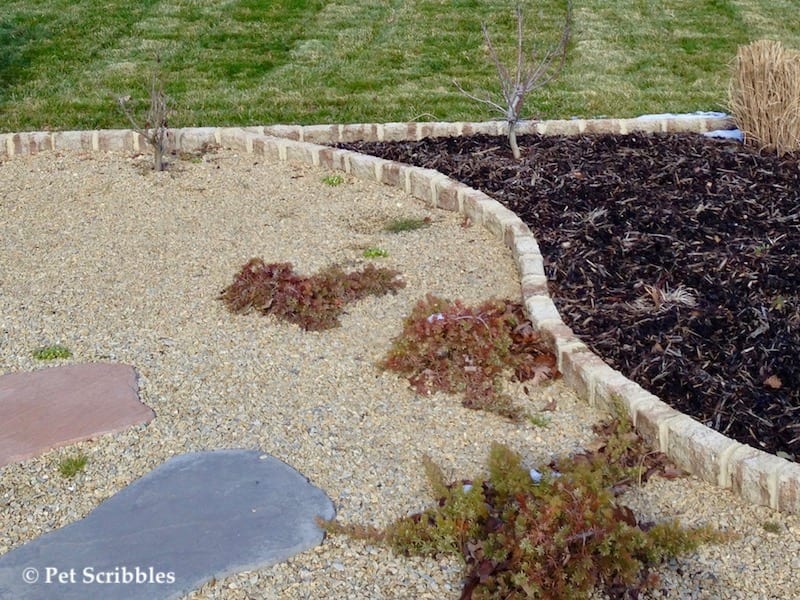
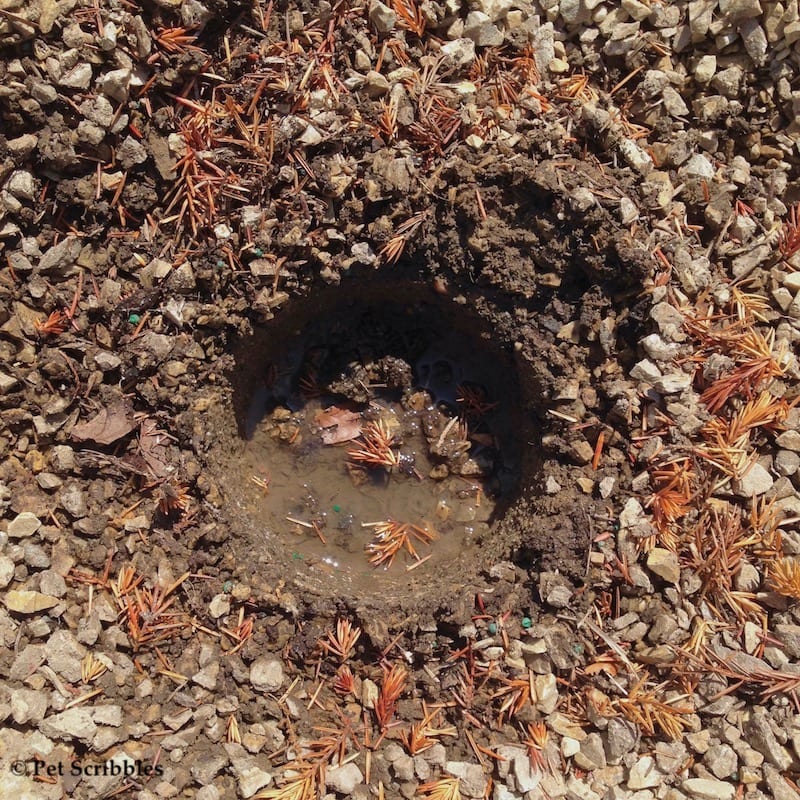
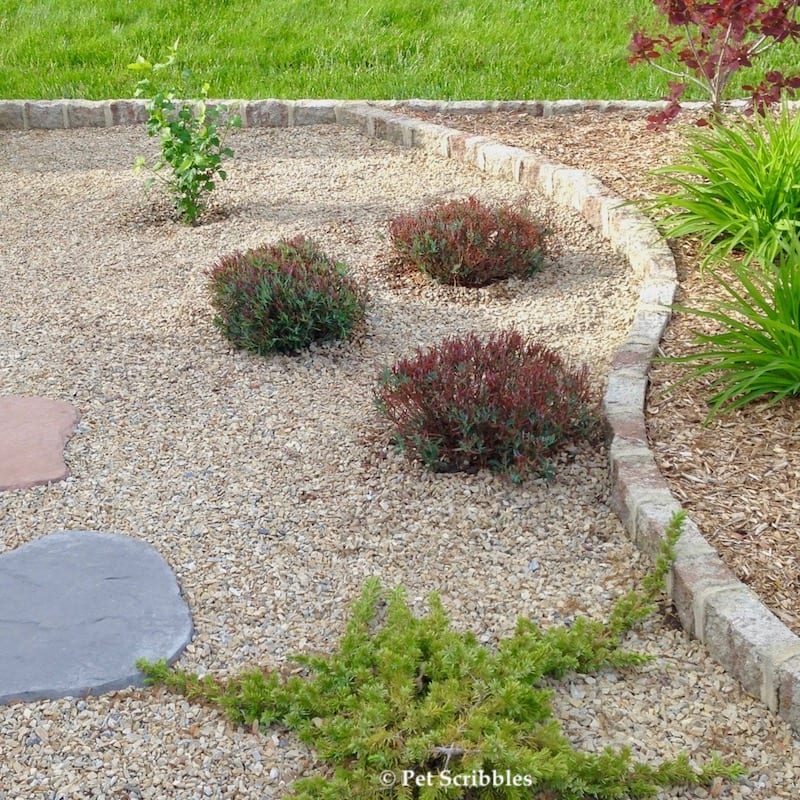
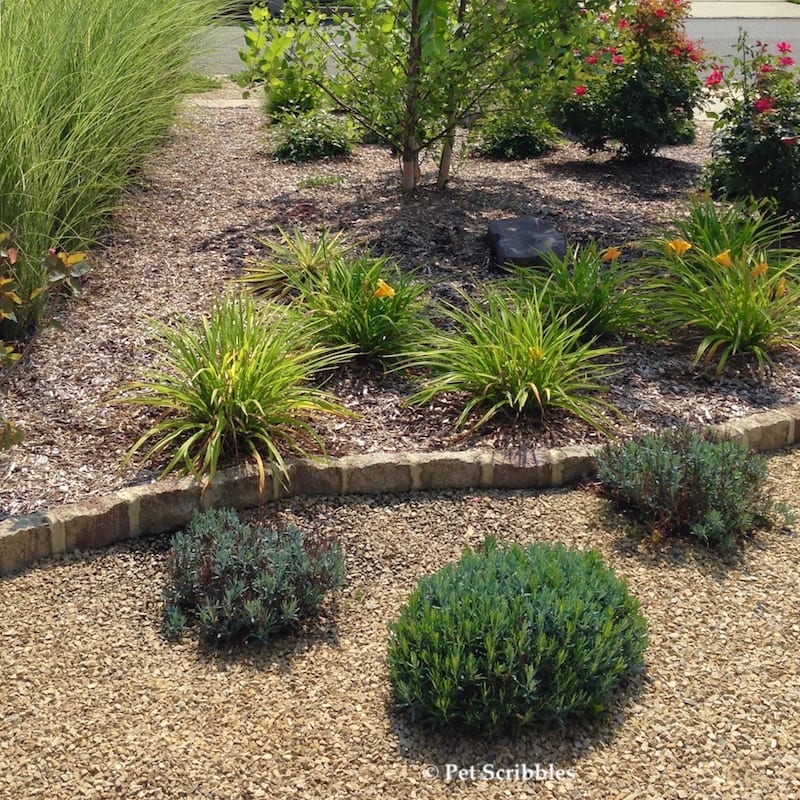
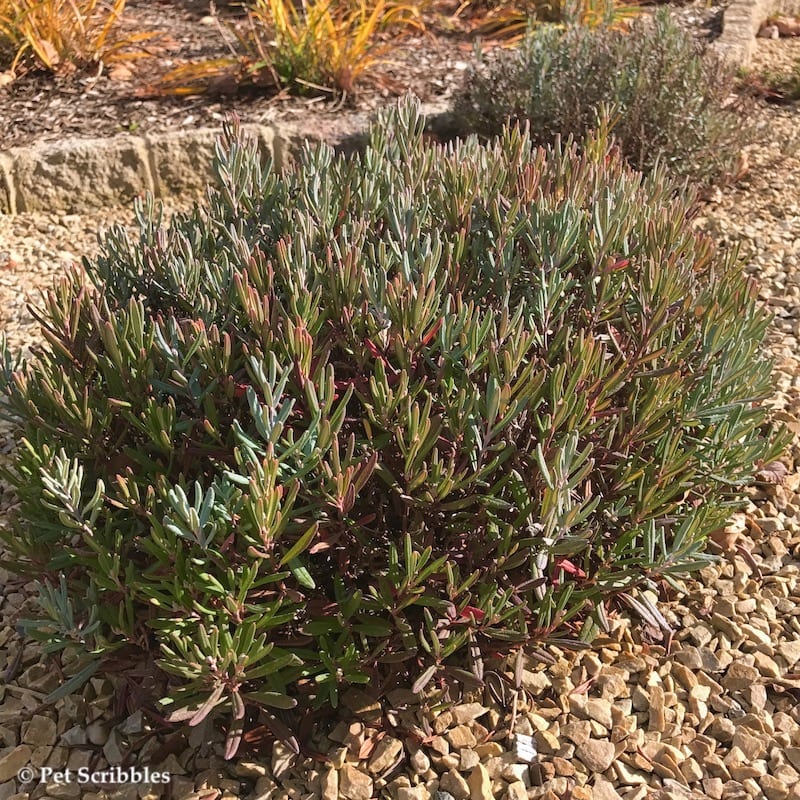
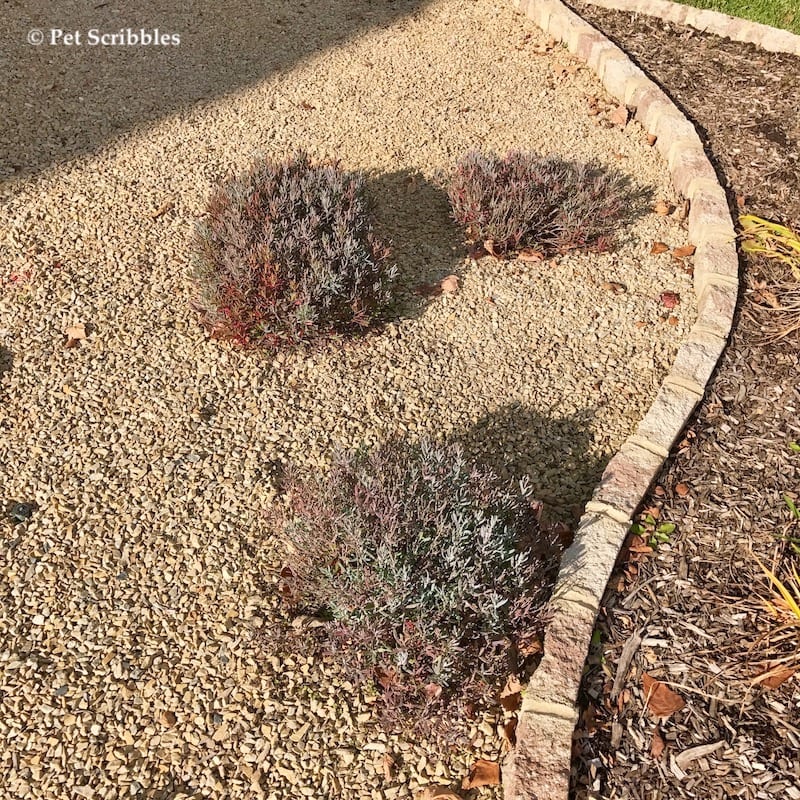
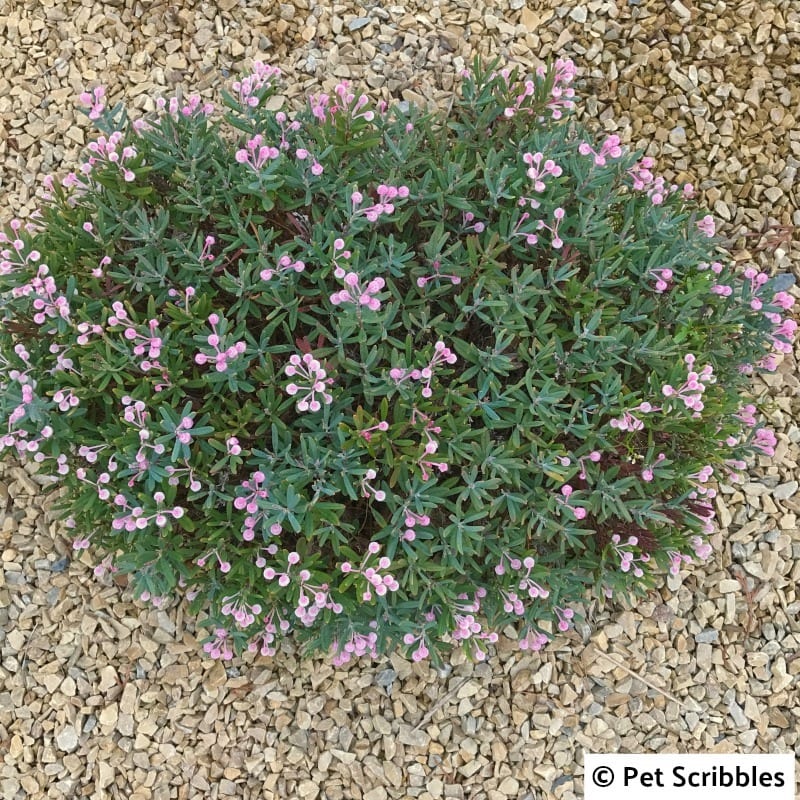
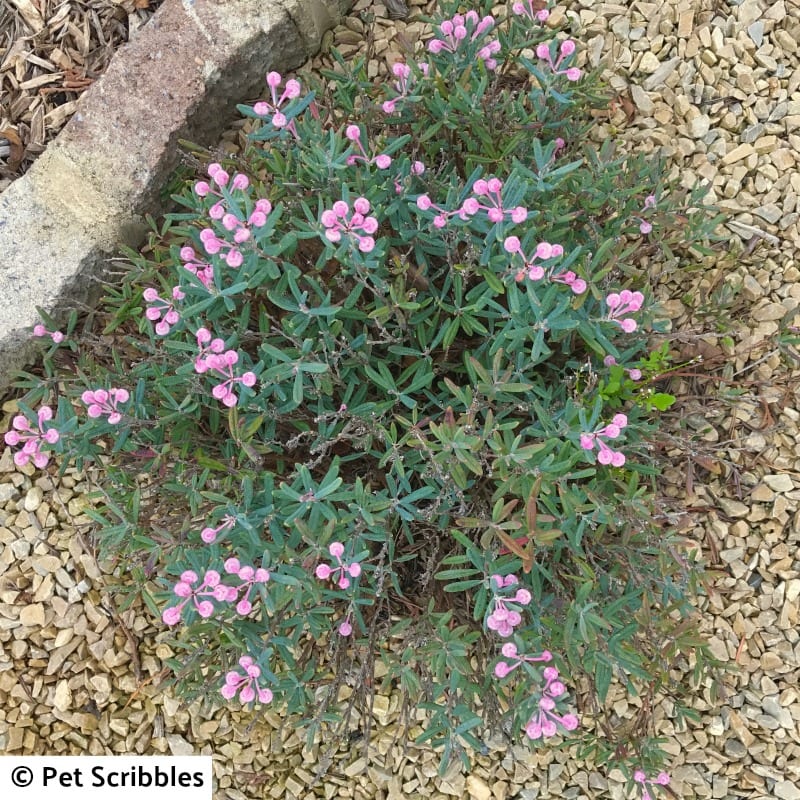
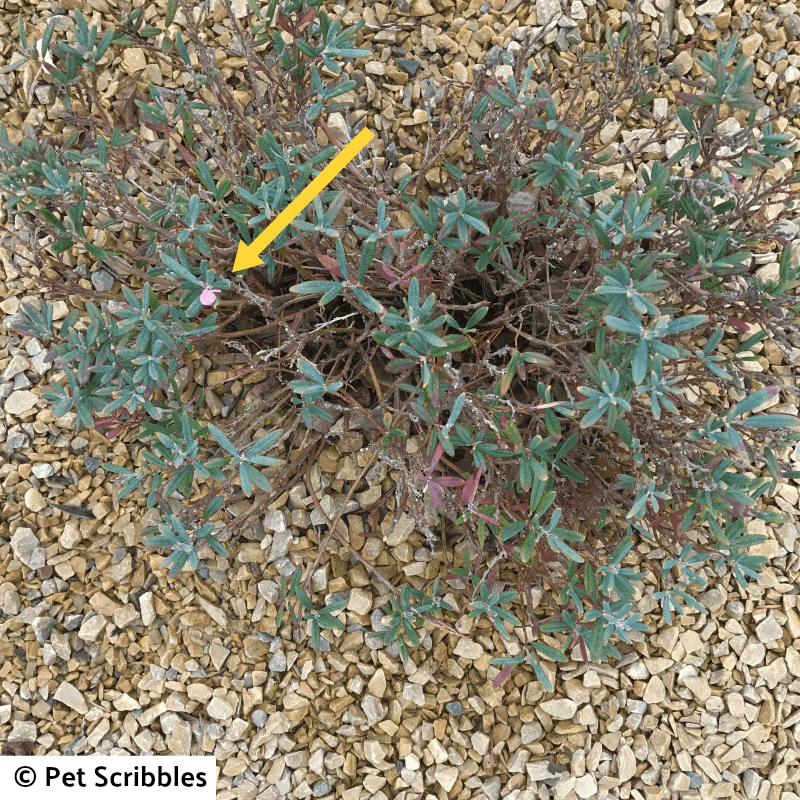
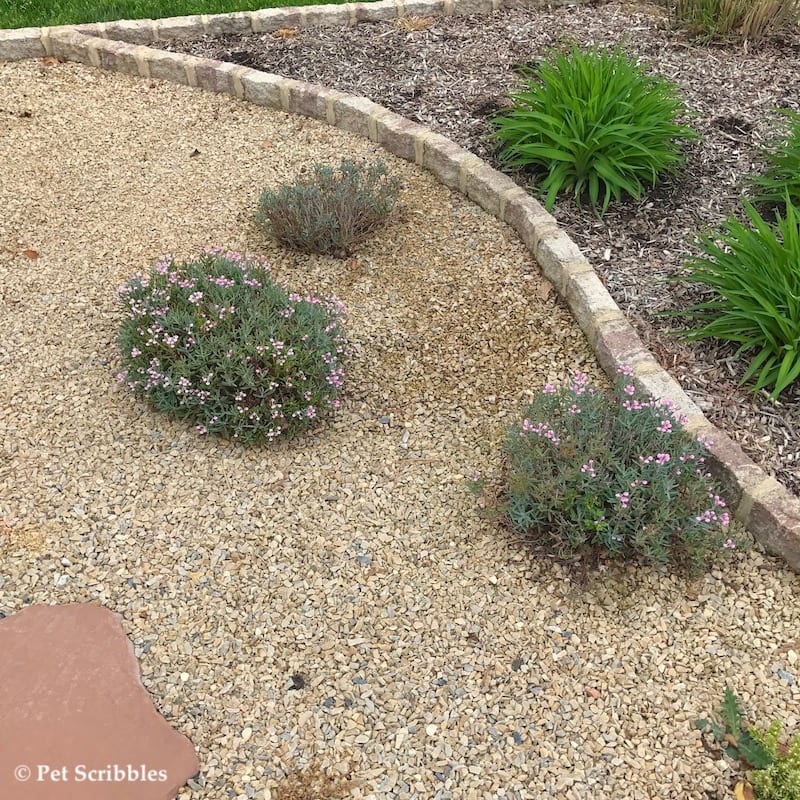
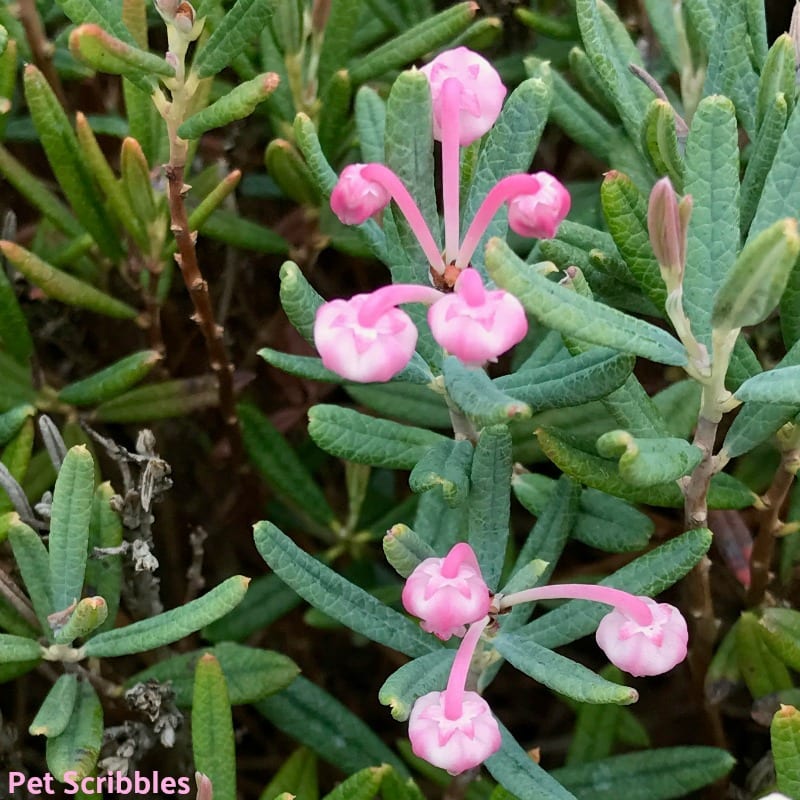
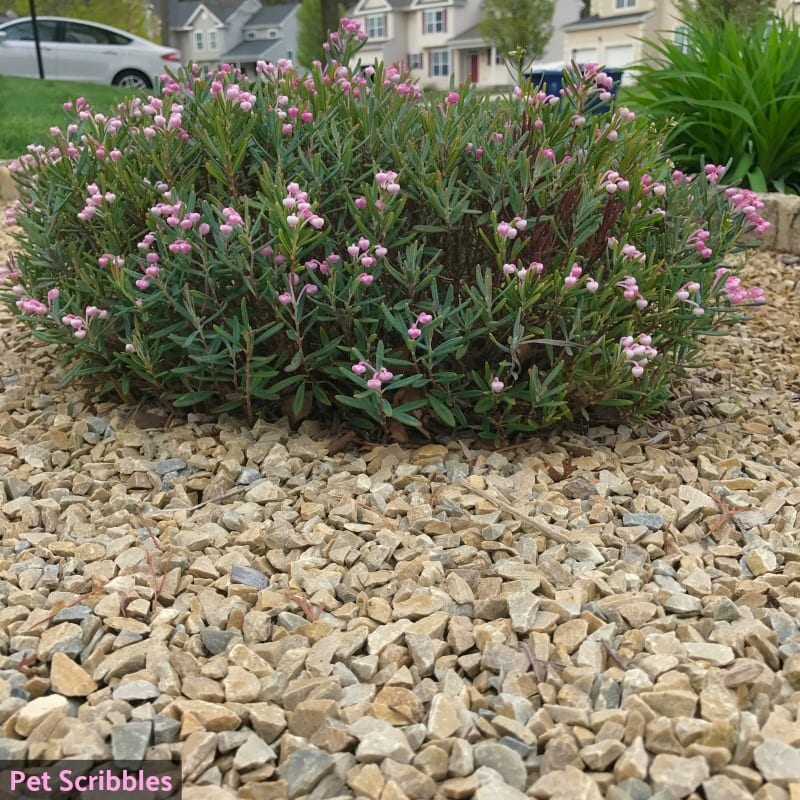
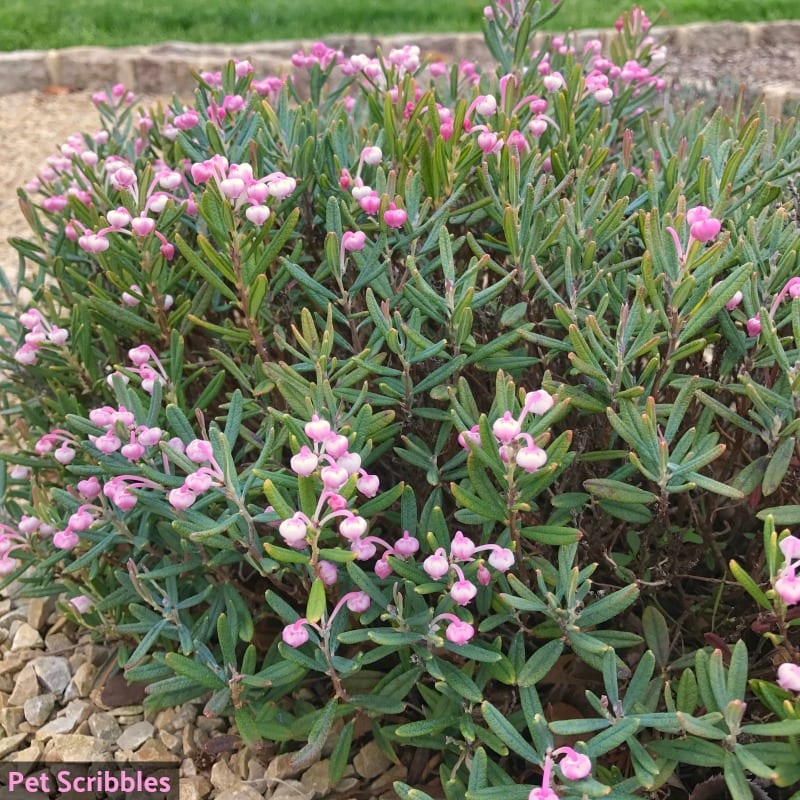
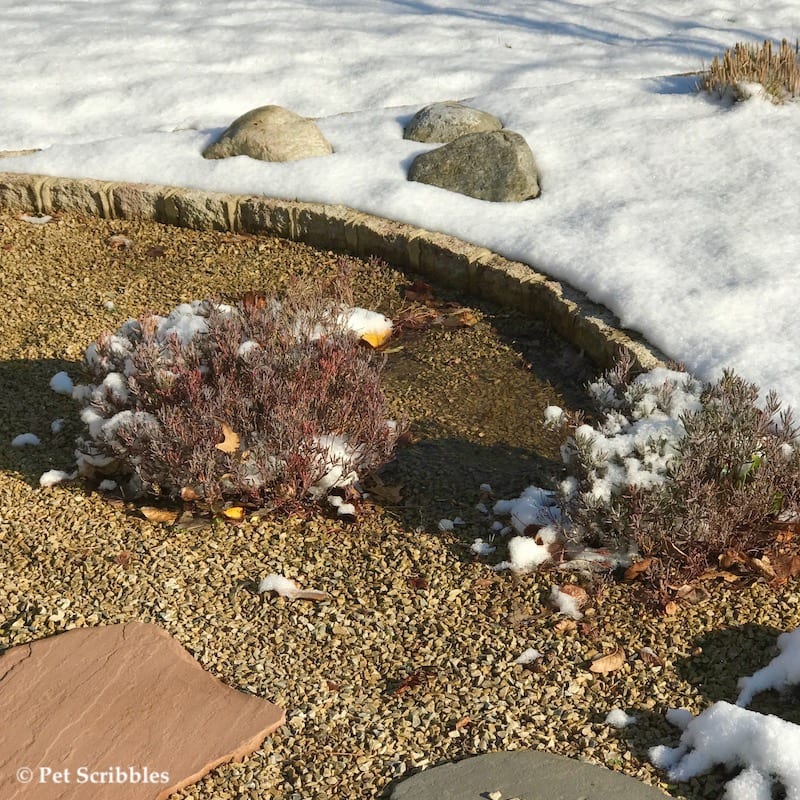
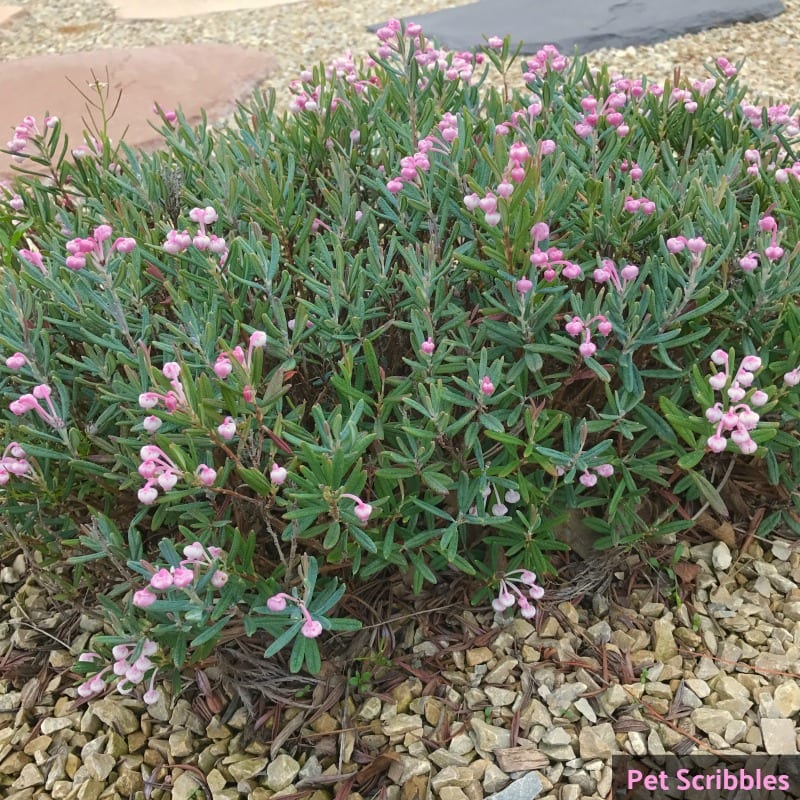
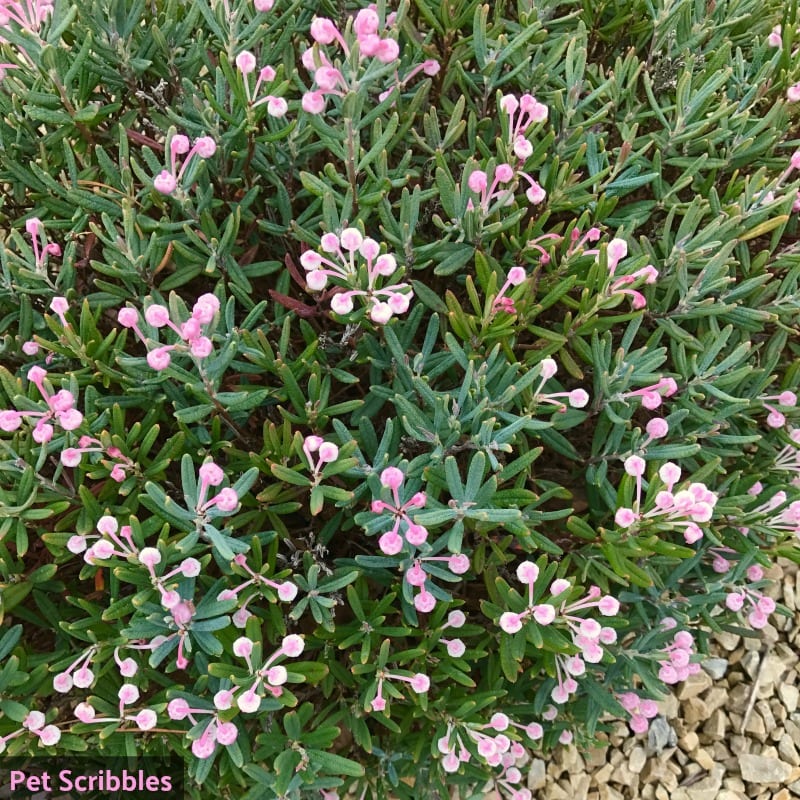
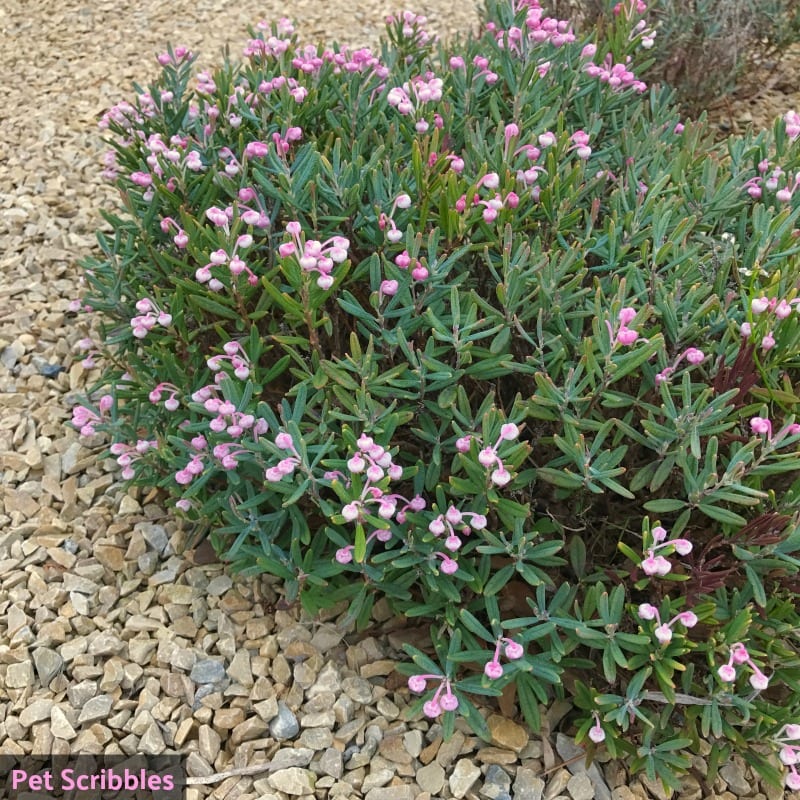
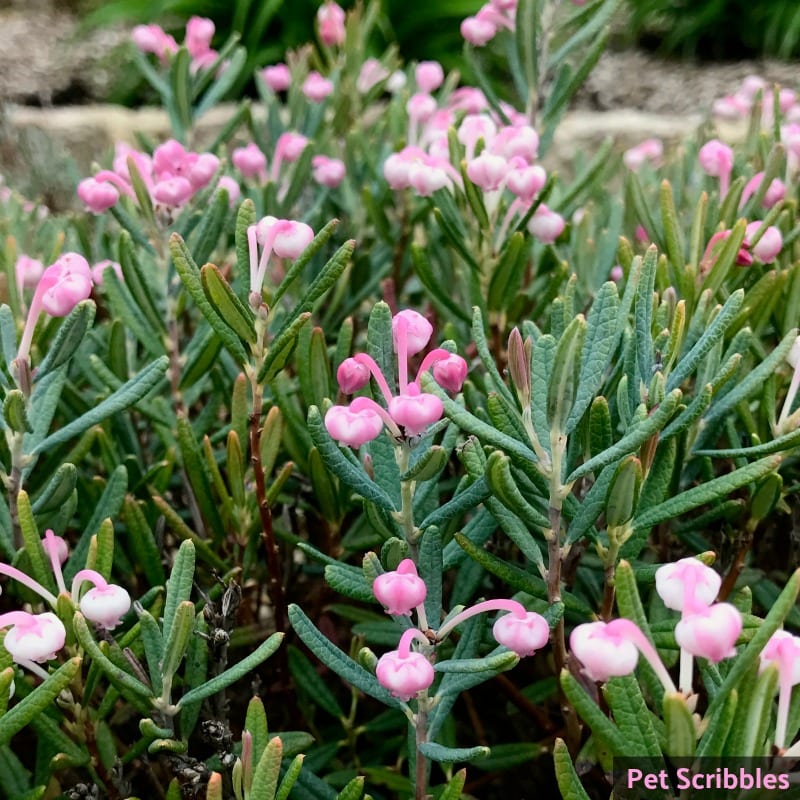
My own experiment with a Bog Rosemary has come to an end after it was eaten over the winter down to the ground. I understood this was a poisonous plant but the same animal got this and my Little Gem Spruce. AS far as I am aware these are being eaten by rabbits, along with my Yuccas. Has anybody else had similar problems?
Thanks for your feedback, Julian. We have rabbits around as well, but fortunately they aren’t eating our Bog Rosemary or our Yucca plants. I’m amazed there are animals that would want to eat this. I’ve heard of deer eating just about anything if they’re hungry enough, but had not heard of rabbits eating this plant before. I’m sorry that happened to yours, and am interested as well if this has happened to anyone else with this plant.
i cannot find a details on how to fertilize …. any suggestiosn?
Thanks for asking Judy, and I’m sorry I didn’t include this in my article above. Bog Rosemary thrives in an acid soil, so adding a bit of Holly Tone fertilizer (by Espoma) each year in the Spring is all you really need for this little shrublet to be happy. Holly Tone is great for other shrubs in the same family, such as rhododendrons and azaleas. Again, thanks for asking and I’ll add this information to my post.
Is there hope if I don’t have an overly wet area? I just picked up one of these plants yesterday, rescuing it from the clearance section. After reading your blog, I am concerned that this little plant might never be happy here. 🙁 Would it be better to put it into a container and be vigilant about watering it? I found your information very helpful and thorough. Thanks for sharing!
I would plant it in the ground and see how it does. Like what happened to me: you will know fairly quickly how it likes the spot or not. Not knowing where you are located, just keep an eye that it doesn’t dry out or get baked by the hot Summer sun. I haven’t seen this in a container, so I can’t recommend it. (Also, check if where you purchased it has a return policy, which also might help. If it doesn’t work for you, maybe you can at least exchange it for another plant.) Let me know how it goes!
Thank you for your information. I purchased my plant on the clearance rack for $3 :o). The original price was $18! There was no tag on the plant or container, so the sales person was no help in identifying the plant or what it’s growing requirement might be. I love a bargain, but now I’m concerned that I do not have a moist area to plant it where it can thrive. I live In St Louis and our summers are hot and humid. I was hoping it would get enough water and be content with a good soaking a couple of times a week.. I was looking for a unique flowering perineal. We’ll see how well it does. If it survives the summer, do you recommend covering with mulch. Does it require watering thru the winter?
Thank you
Happy Gardening
Hi Kay,
Glad you found this post, since your bargain didn’t come with any info! (Gotta love a good bargain, however — and $3 for a bog rosemary is great!) We’re hot and humid during the Summer as well here in southern New Jersey, and your USDA zone is similar to mine as well: yours is 6a and mine is 7a or 7b depending on which way the wind blows. 🙂 Trust me, you’ll be able to tell pretty quickly if your bog rosemary is getting enough water. I think a good soaking like you suggest should be fine for them, especially during it’s first year as it gets established. I have some type of mulch around our plantings, whether its playground mulch or gravel — depending on the landscaped bed. I don’t think you will need anything to cover the plants during the winter. Usually with the rain and snow, the plants will get enough water throughout the Winter months. These plants are supposed to be evergreen, so again, you’ll kind of be able to tell how they’re doing. However, don’t fret if come next Winter they look a bit sad — they will bounce back, as mine have done. It takes a bit of patience to figure out when the plants are happiest. Remember: a bog plant loves water, but not to be waterlogged. It’s a fine line on these particular plants. Geez, I hope I’ve helped! LOL
I live in Ohio do I need to cut this plant down after the frost.
Hello Jan, as this is an evergreen, you shouldn’t have to cut it down for the Winter months. If some of the plant does not survive the Winter, then you can cut those stems off in early Spring. It is a low-growing shrub — commonly called a shrublet because of its small size — so no need to cut it down. I hope this helps!
Can you divide Bog Rosemary or is it like regular Rosemary, a woody shrub?
Good question, John. According to the US Forest Service, Bog Rosemary primarily grows and spreads by underground roots and rhizomes. The best way they suggest to successfully divide Bog Rosemary sounds a bit involved: “The Bog Rosemary plants should be ‘dropped’ beforehand, which entails digging up the plant 6 to 12 months earlier and replanting it somewhat more deeply. The buried branches then root and form new plants.” Then, after 6 to 12 months, you can dig them up and divide those plants — the original Bog Rosemary and its new off-shoots. I’d be very curious if you try this, so let me know!
As far as propagating I just cut a couple of stems off of my friend’s plant stuck it in a glass of water and it already has roots it’s been in there about a month. I do have a spot in the garden that gets Morning Sun hopefully that will be enough.
That’s wonderful Donna! Thanks for sharing, as this is such an easy way to make more plants and save money at the same time!
I have two of these Bog Rosemarie’s in large pots, I bought them in Spring 2019 when they were covered in flowers. They have done very well in their shaded location at the northern facing front end of my home where they have doubled in size, now reaching the edge of the pots. I am waiting to see how well they do over the winter months and whether they will flourish next spring as well as when I bought them..I live in Oregon which is zone 8.
That’s wonderful Bryn! I’m wondering if shade is better than the recommended “partial to full sun” because mine definitely have not doubled in size. Keep me posted how they do in the Spring next year. I’m imagining they look gorgeous, as I love the blue-green color of them!
My 2 have dried out but for a few branches this spring. Can I cut them back? I don’t remember them looking dried out last spring. They’re in a moist area of garden in partial shade
Hmmmm…. if it was me I would cut back the dead branches, at least part of the way down to the ground. After that I would treat them as normal, i.e. dig in some Holly Tone into the soil around each one, as bog rosemary plants love acid soil, then give it a good water — or hopefully the Spring rain can do that too. I would keep an eye on them and hope for the best. Did they bloom for you last Spring? Are there any signs of leaves and/or flower buds on the healthy branches?
Great information – just what I needed. Thank you!
You’re welcome Lizzie! Glad this info is helpful!